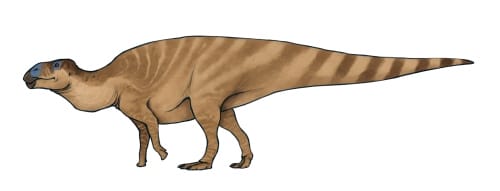Amtosaurus is solely known from a fragment of its skull. This dinosaur’s classification is debatable. Amtosaurus was formerly thought to be an ankylosaur, but subsequent research indicates that it was a hadrosaur. Amtosaurus archibaldi, a second species of this species, has been described as a legitimate Ankylosauridae taxon Bissektipelta.
Find out more facts about Amtosaurus.
1: Amtosaurus quick facts:
Name: Amtosaurus (Greek for “Amtgai Lizard”); pronounced Am-to-sore-us
When it lived: Late Cretaceous, 90 million years ago
Type of dinosaur: Ornithopod
Location: Mongolia
Habitat: Terrestrial habitats.
Length/Weight: Unknown
Diet: Herbivorous
Distinguishing Characteristics: Unknown
Named by: Kurzanov & Tumanova (1978)
2: How do you pronounce ‘Amtosaurus’?
The name Amtosaurus should be pronounced “Am-to-sore-us.”
3: What does the name Amtosaurus mean?
The generic name Amtosaurus means ‘Amtgai lizard’ since Amtgai is where the species was discovered and the Greek word’sauros’ means lizard.
4: What Did Amtosaurus Look Like?

Amtosaurus holotype lacked characteristics that would have justified its classification within the Ankylosauria. Amtosaurus was an Ornithis representative whose position was ambiguous. Amtosaurus should be considered a nomen dubium because to the lack of diagnostic characteristics, as was previously indicated.
Sources:Wikipedia





GIPHY App Key not set. Please check settings